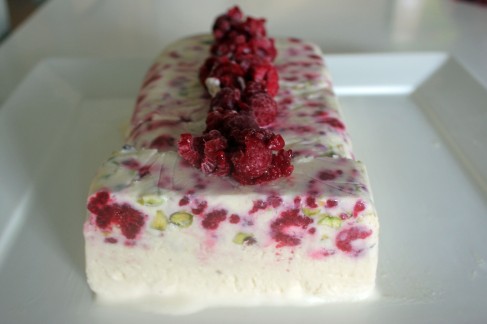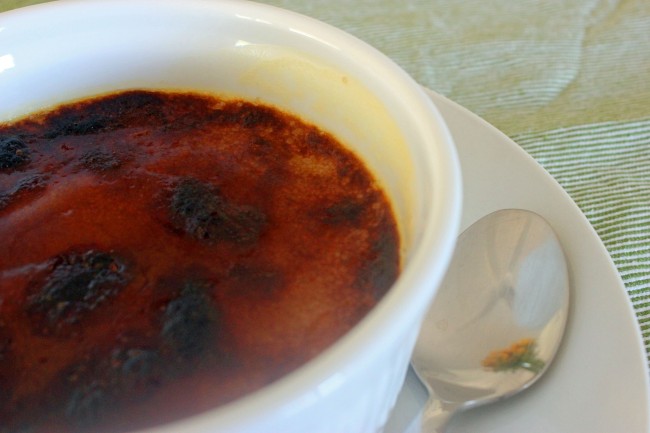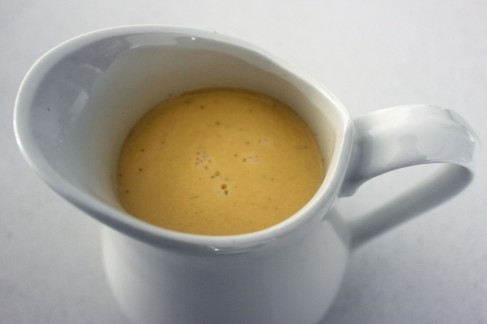
A semifreddo is a “still-frozen” moulded dessert which means that it doesn’t require churning like ice-cream so is simpler to prepare and doesn’t call for complicated equipment.
It translates as “half frozen” and based on a crème Anglaise custard lightened with whipped cream or meringue.
The theory is that the whipped cream or meringue lighten the custard base and create more air in the semifreddo which makes it seem less cold…hence half frozen.
And once you get the base recipe sorted, you can flavour it any way you want so it’s a very handy dessert to have up your sleeve.
I’ve seen the following combinations in my research:
- Chocolate, hazelnut and fig
- Toffee and macadamia
- Mango, lime and coconut
- White chocolate and sour cherry
Yuuuuum!
Since the purpose of this is to practice my crème Anglaise, I’ve attempted to create a recipe myself from scratch.
Raspberry, limoncello and pistachio semifreddo
6 egg yolks
500 ml milk
125g caster sugar
1 ½ cups whipping cream
1 cup raspberries (frozen or fresh)
¼ cup limoncello
1 tbsp lemon rind, finely grated
2/3 cup pistachios, roughly chopped
Make your crème Anglaise (using egg yolks, milk and caster sugar), then place in a bowl of iced water to cool. Once cooled, add the limoncellow and lemon rind.
Whip the cream, fold into the lemon custard mix. Add the pistachios and raspberries.
Pour the mixture into a loaf tin lined with cling film.
Freeze for 6 hours or overnight.
Top tip – to stop the ingredients sinking to the bottom, stir the mix gently after an hour.
The flavour was great, but there were still a fair few ice crystals and not the smooth, creamy texture I was after. Does anyone have any tips for overcoming this? I’m thinking if I make it again, I’ll reduce the quantity of milk to make the mix a bit thicker?




